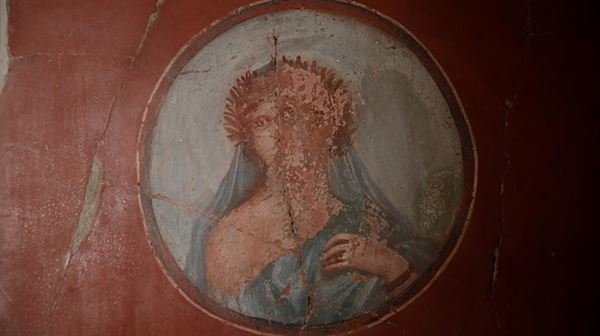One of Italy's most beautiful ancient Roman houses, which was buried under tonnes of ash when Mount Vesuvius erupted in AD 79, has reopened to the pub
One of Italy’s most beautiful ancient Roman houses, which was buried under tonnes of ash when Mount Vesuvius erupted in AD 79, has reopened to the public 36 years after it was shuttered in disrepair.
Using innovative techniques, a team of restorers have saved the sumptuous artwork in the so-called Bicentenary House, a three-storey building in Herculaneum which, like its more famous neighbour Pompeii, was devastated by the nearby volcano.
The house was initially discovered in 1938 and was given its name because it was the 200th anniversary of excavations that had revealed the existence of the long-lost city.
“It’s a jewel in this site and the opening of it today really marks a great occasion for the whole revival of the site and for this piece of heritage, which is unique in the world,” said Leslie Rainer, an expert at the Getty Conservation Institute, which helped on the project.
A much smaller city than Pompeii, Herculaneum’s ruins are more dense and better preserved because they were buried in a much deeper mass of ash, which deterred thieves. It was also a wealthier place resulting in particularly striking remains.
Bicentenary House was home to Gaius Petronius Stephanus and his wife Calantonia Themis. It was one of the city’s finest private houses, with well-preserved mosaic floors and frescoes depicting mythological scenes and architectural and animal motifs.
The house gave onto Herculaneum’s main street and the entrance had a sliding wooden grill, which survived the volcanic inferno. “It is 2,000 years old. It is one-of-a-kind with its delicate decorations,” said Domenico Camardo, chief archaeologist at the Herculaneum Conservation Project.
Like many houses in Pompeii, the Bicentenary House suffered years of mismanagement and dilapidation, forcing its closure in 1983 when it was declared unstable.
“It closed … because of problems of decay and neglect, not caused by anything traumatic like a civil war or an earthquake. Just by the failure of the public system to do everyday maintenance,” said Jane Thompson, who oversees the Herculaneum Conservation Project.
A previous restoration did more harm than good, covering the frescoes with a material that was meant to protect the colours and images but in the end contributed to them flaking away.
The conservation team worked out a way to safely remove the harmful veneer and save the ancient artwork beneath.
“It was an occasion to develop new, innovative materials and methods for conservation that can be used in the site and elsewhere,” said Rainer, explaining that other frescoes at the site had been covered by the same, damaging coating.
